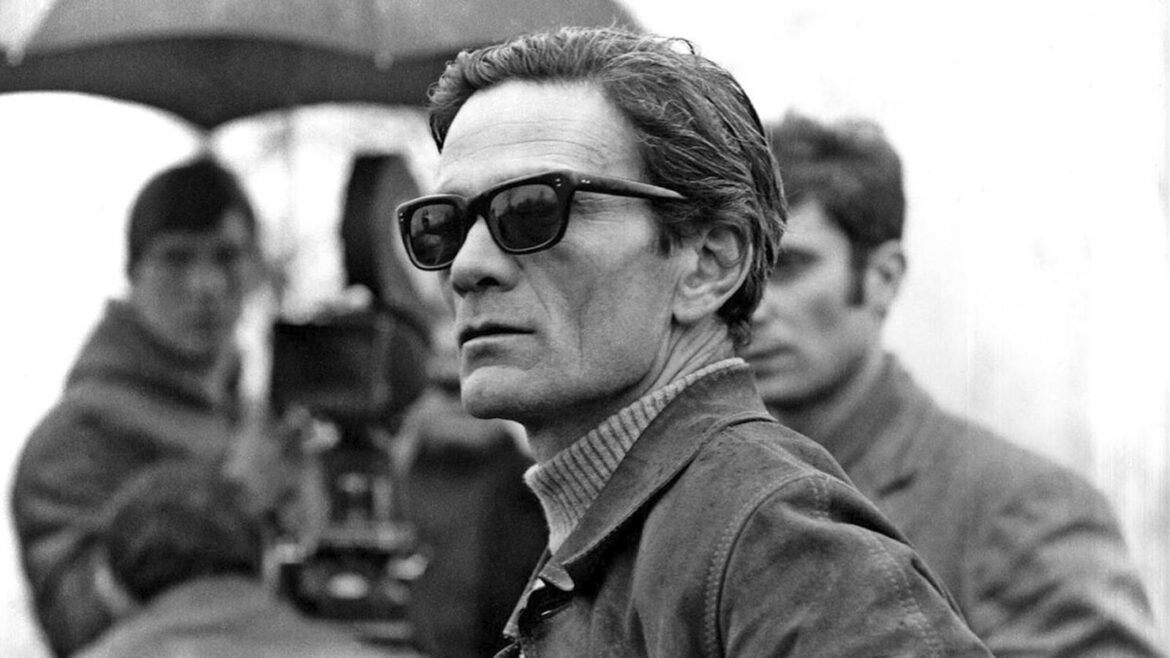I still cannot believe I have the new Criterion box set of the films of Pier Paolo Pasolini in my hot little hands. I have been waiting for this baby for months and sliding in each disc to see the stunning clarity of each print and scanning the copious extras makes me lose my mind with joy. And if that isn’t enough this month there’s a great Fritz Lang film noir, a fun Euro-sleaze horror film, a terrific Italian thriller, a fabulously entertaining Soundies: the Ultimate Collection from Kino Classics, Robot Monster in 3D and a 4K UHD of one of my favorite William Friedkin films- To Live and Die in L.A.
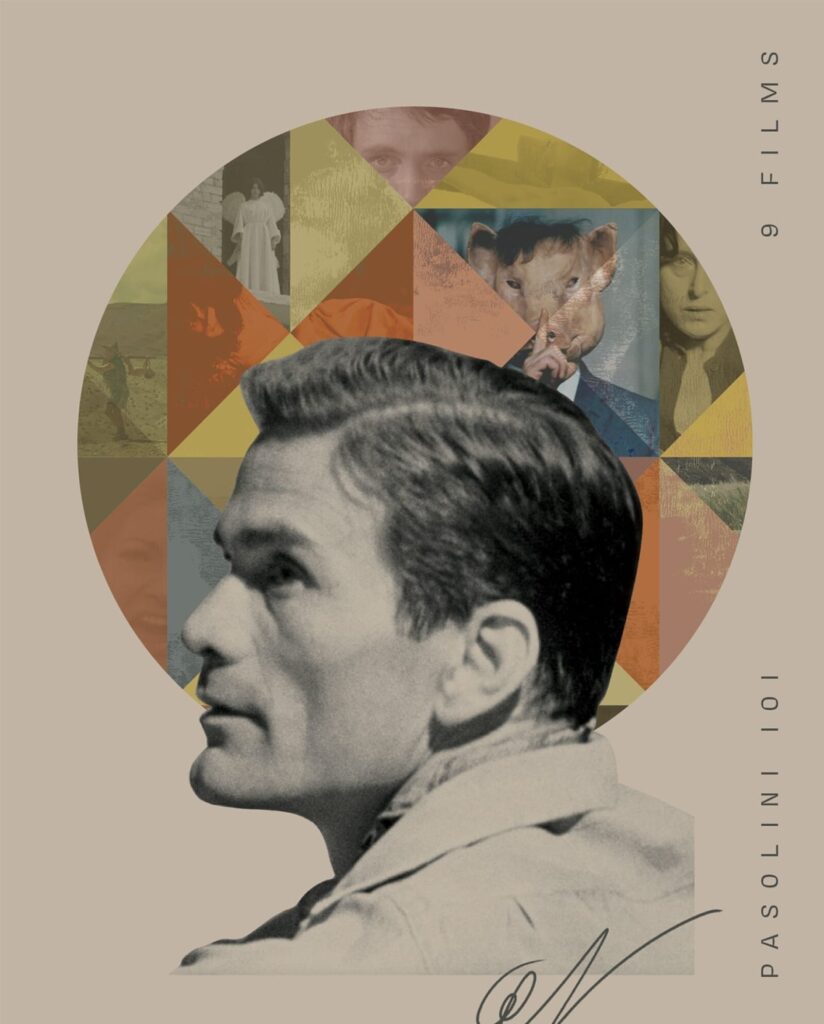
Pasolini 101 (Criterion) Pier Paolo Pasolini was an Italian poet, teacher and Marxist firebrand who had worked on screenplays for other directors- like Fellini on Nights of Cabiria– before deciding to make films himself. His artistic temperament led to a series of innovative, poetic, iconoclastic works that mixed neorealism with avant-garde touches and painterly imagery. To me he was a God, and seeing his films on the big screen overwhelmed and moved me more than I can ever describe. The nine films included in this impressive set include:
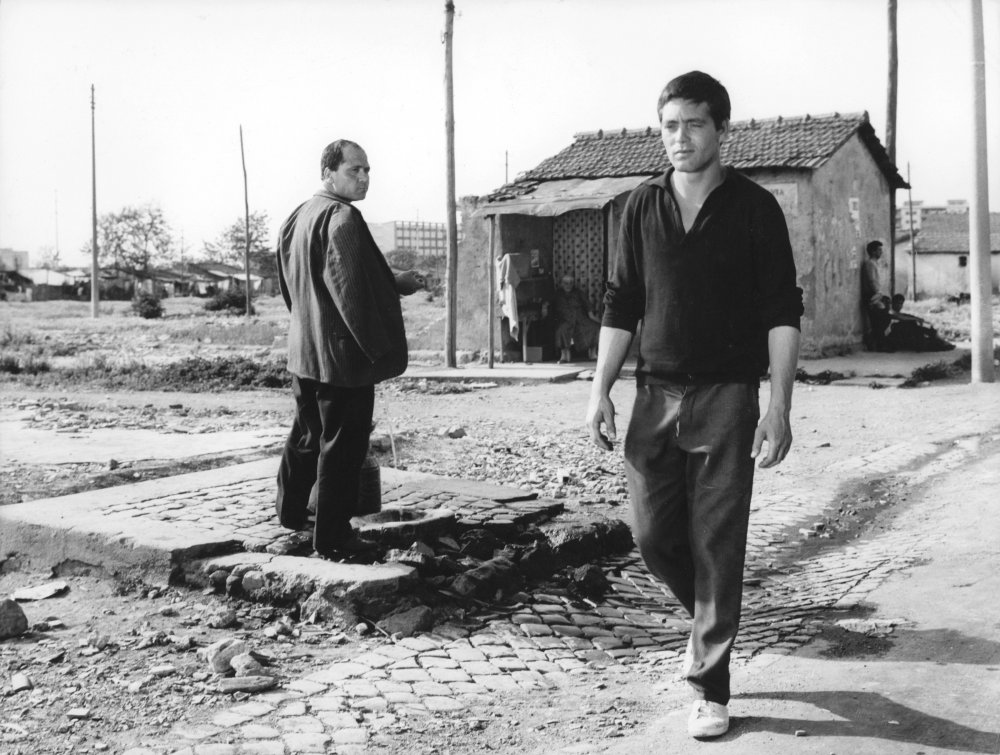
Accattone (1961) Franco Citti was introduced to Pasolini by his screenwriter/director brother Sergio Citti who became a frequent collaborator with Pier Paolo. Franco was self-taught and certainly a non-professional actor but his amazing face was made for the big screen. Pasolini used him in several pictures and Citti went on to work with other directors like Frances Ford Coppola– he plays Michael Corleone’s bodyguard in The Godfather. In this film he plays a pimp, whose one hooker gets thrown in jail for a year. The thought of working for a living paralyzes him- he is more at home hanging and drinking with his slacker friends. But he meets a sweet young girl and grooms her to be a prostitute with disastrous results. Pasolini’s obvious familiarity and fondness for these roughneck types (and lack of judgmental tone) adds poignancy to what would could have been a lurid tragedy.
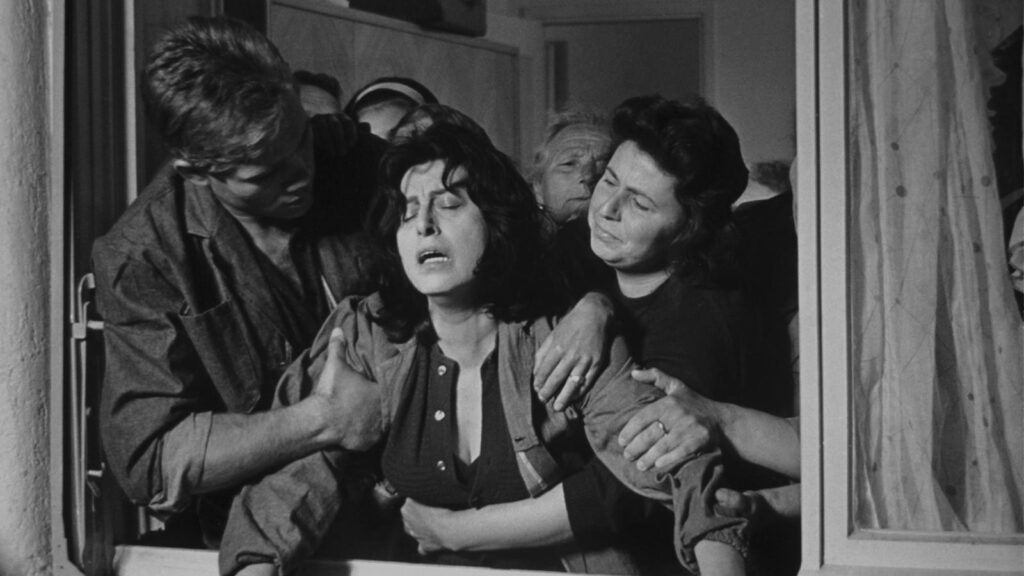
Mamma Roma (1962) Pasolini engaged the great Italian actress Anna Magnani to play a retired prostitute who tries to raise her son in a bleak, industrial section of Rome. Her efforts to create a better life for him are undermined by the gang of delinquents he falls in with. Magnani is a force of nature on screen- she rages and weeps and roars- even her laughter registers on the seismograph. The film opens with her boisterous laughter and ends with her agonized cry of pain. Also included on this disc is Pasolini’s controversial and brilliant La Ricotta, a short film he did for the omnibus film Ro.Go.Pa.G. It stars Orson Welles as a director doing a Passion Play about Jesus and a poor extra who gives his allotted meal to his family. He is starving and tries to sneak food whenever he can. Pasolini was accused of “holding contempt for state religion” and sentenced to four months which he avoided by paying a fine.
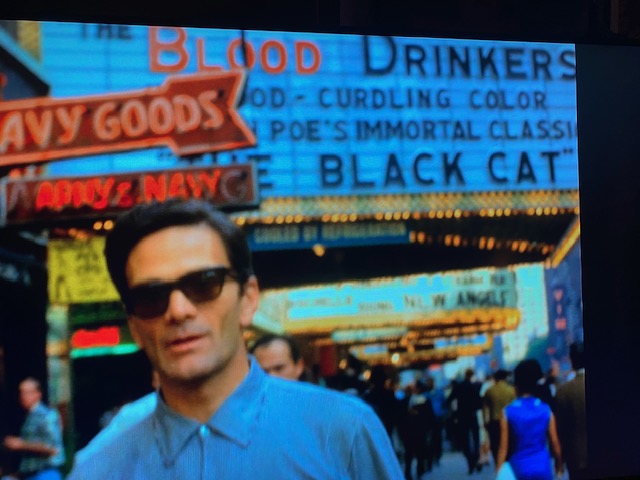
Love Meetings (1964) Pasolini travels across Italy armed with a camera and microphone interviewing locals on their feelings about sex, love and marriage. Some sequences are quite comical- like when he asks a group of children on the street where babies come from. The amazing thing on this disc is a short film by Agnes Varda who filmed Pasolini walking up and down 42nd street in 1967 under such marquees as The Blood Drinkers. It’s amazing.
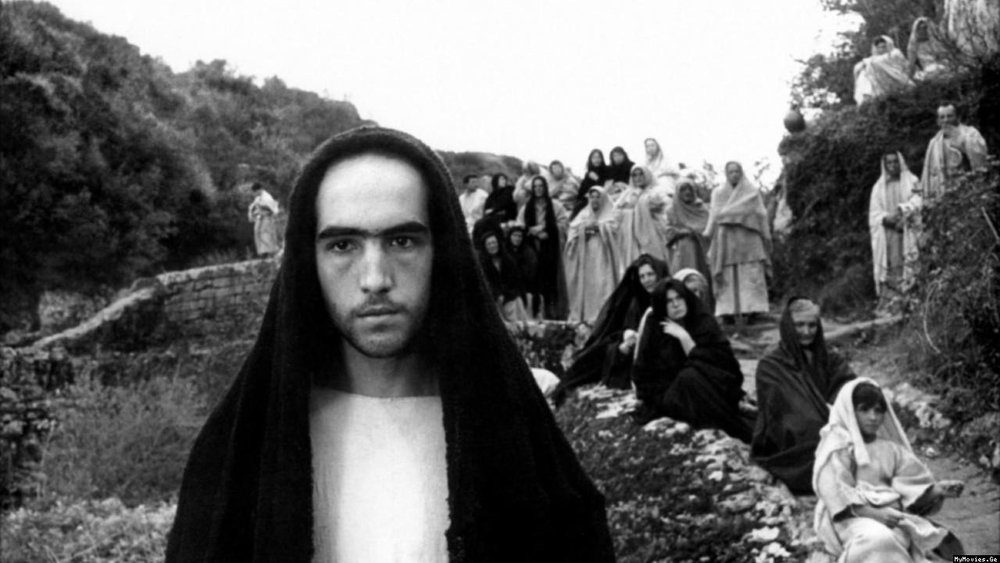
The Gospel According to St. Matthew (1964) An astonishingly beautiful neorealist film about the life of Jesus Christ, shot in Palestine and taken from the Gospel of Matthew, using non-professional actors to play the roles and a Spanish student of literature- Enrique Irazoqui to play Christ. The gorgeous black and white visuals and extraordinary faces paint a Biblical portrait like no other. Not to mention his eclectic music choices from Bach to Brazilian music to a Odetta’s haunting rendition of “Sometimes I Feel Like a Motherless Child.” You can see how Martin Scorsese used this film as a roadmap for The Last Temptation of Christ.
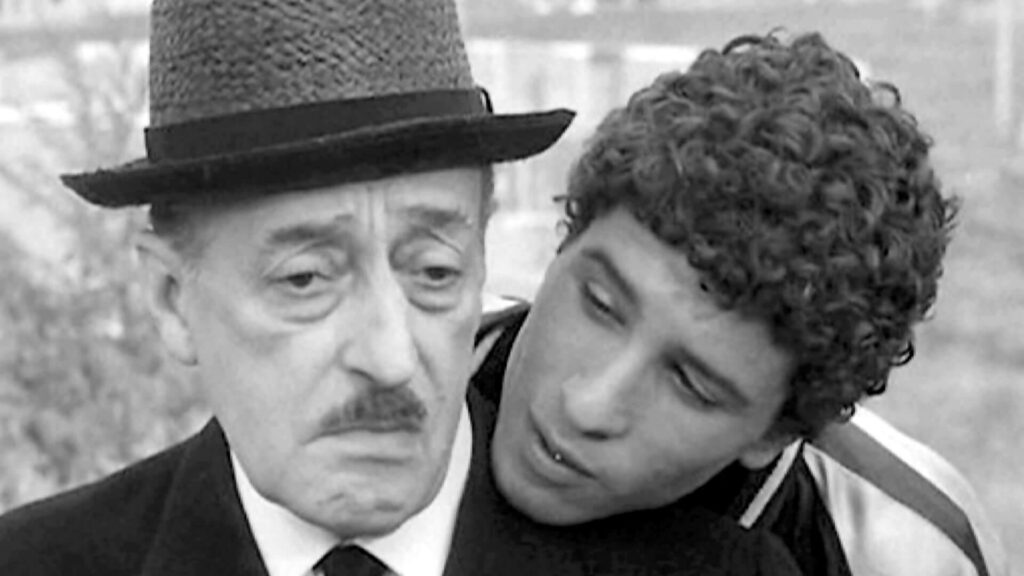
The Hawks and the Sparrows (1966) Pasolini dons his Marxist hat to tell this comic fable about a father (played by the clown Toto) and his son (Ninetto Davoli) wandering the countryside who meet a talking crow and are transported back to the time of St. Francis. They are taught to study the language of birds but eventually learn a sobering lesson about the real nature of hawks and sparrows. When they return to modern time they have other oddball adventures before they decide to eat the crow because it just won’t shut up. Pasolini always said this was his favorite among his films. As an extra there is a 1997 documentary by Jean-Andre Fieschi called Ninetto the Messanger, an extraordinary interview with Ninetto Davoli recounting how he was a child of the slums that had the world magically opened to him by Pasolini. He talks about having dinner with Pasolini and the next day he discovered Pasolini had been tragically murdered. Davoli said “It was actually the worst day of my life, because…it’s hard to explain. I felt like my life had been tragically cut short, definitely cut short, broken in half.”
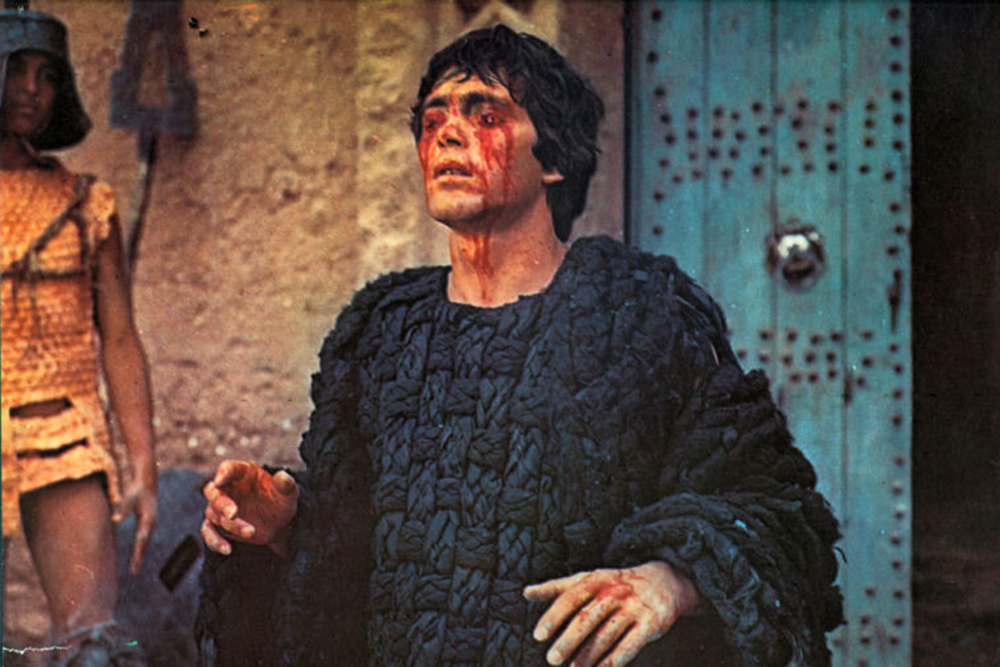
Oedipus Rex (1967) Pasolini’s weirdly autobiographical version of the Sophocles drama and his first feature-length color film. The lyrical nonverbal prologue is set in Bologna in the 1920s with a stunning Silvana Mangano as a mother playing with her baby on a verdant green lawn, while later a military-clad father glares at the child in its crib. Then we are transported to Morocco for the Oedipus tragedy. A baby is left to die in the desert and rescued and raised by the infertile King and Queen of Corinth. He is named Oedipus (Franco Citti) and much later is plagued by nightmares. He goes to see the holy oracle for advice only to be told he is cursed to kill his father and make love to his mother. And guess what? Pasolini later shows up as a high priest and The Living Theater’s Julian Beck is a blind prophet. The epilogue is set in present day Bologna with a blind, haunted Oedipus (Citti) wandering the streets playing the flute and led by the joyful, sweet Angelo (Ninetto Davoli). The stylized costumes- a colorful mix of African, Sumerian and Aztec- are just surreal.
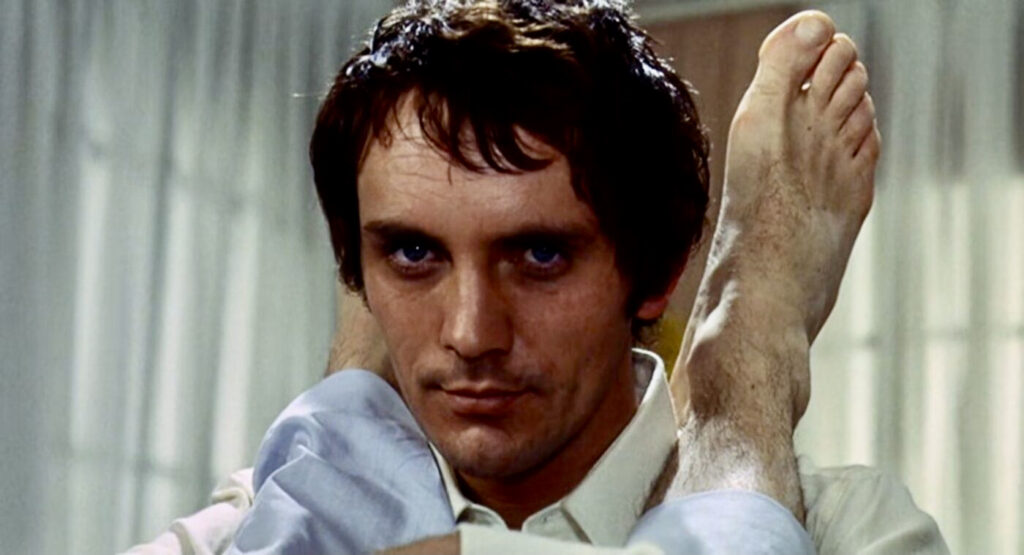
Teorema (1968) Pier Paolo Pasolini’s allegory about a mysterious stranger (beatific and beautiful Terence Stamp) who descends on a bourgeois Italian family, sleeps with all of them, including the religious maid (Laura Betti– Pasolini’s dear friend). Then, when he leaves, they all go bonkers. The gorgeous Silvana Magnano plays the repressed mother who ends up driving around having anonymous sex with strangers in this mesmerizing masterpiece. Scenes of the naked father running screaming over a volcanic wasteland have haunted me ever since I first saw it. This includes commentary by Pasolini experts, a 2007 interview with Terence Stamp and an introduction to the movie by director Pasolini from 1969.
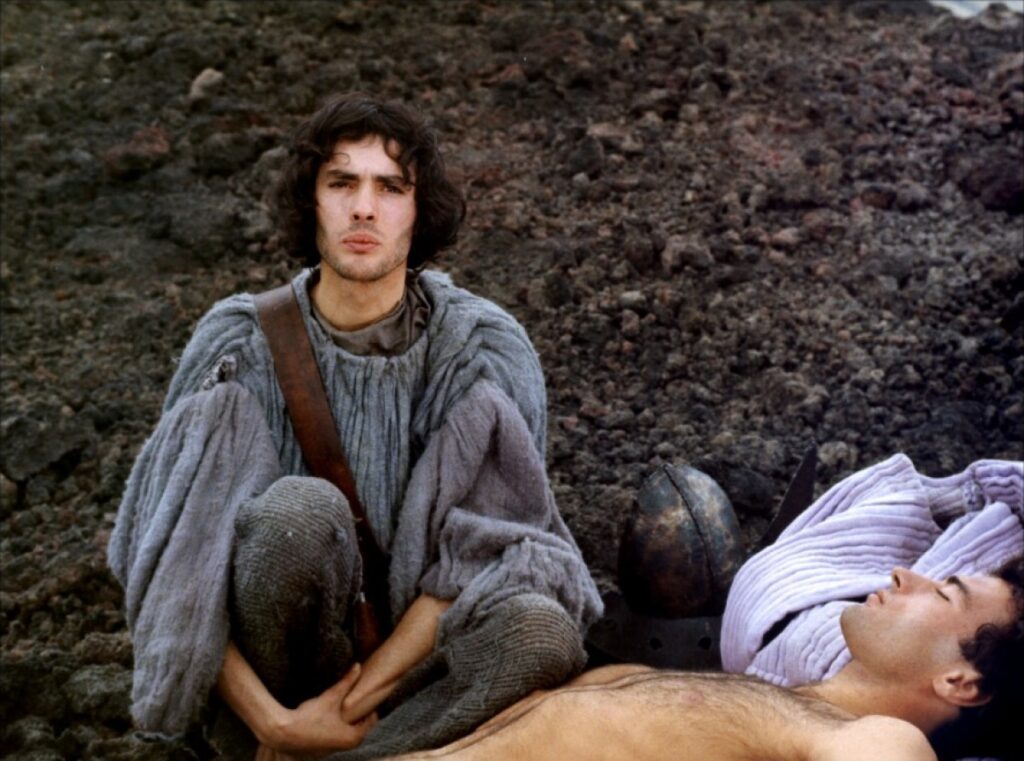
Porcile (1969) Pasolini described this bizarre, difficult film as “a poem in the form of a desperate cry.” It’s definitely an allegorical experiment with two stories going on. In one- Pierre Clementi (Belle de Jour) plays a nomad climbing across a vast, windswept volcanic wasteland hunting for food. He kills a fellow traveler and resorts to cannibalism. He picks up other carnivores along the way (including Franco Citti) until they are captured, tried and lashed to stakes in the desert to be devoured by wild dogs. Clementi remains defiant to the end- achieving a sort-of sainthood by repeating: “I killed my father. I ate human flesh and I quiver with joy.” The other story is Jean-Pierre Leaud, who plays a German industrialist’s son who can’t seem to commit to anything. His girlfriend asks him to join a huge peace rally in Berlin to “piss on the wall” and he takes to his bed in a catatonic state. Later he revives and during a party for his father’s merger he goes to a pigsty only to be devoured by swine. Pasolini’s vision of the world heads in a darker, more nihilistic direction- which culminated in Salo.
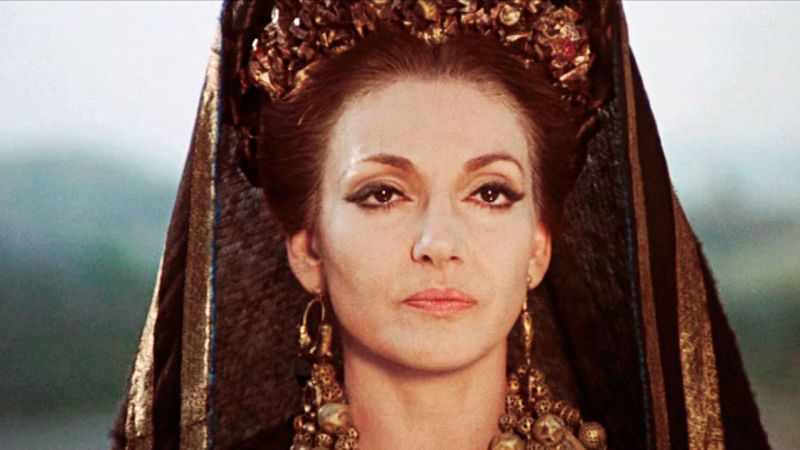
Medea (1969) The great, world famous, soprano Maria Callas stars in this adaptation of the classic Euripides play. The film is pretty faithful to the text about Jason (of Golden Fleece fame) and the betrayal of his wife Medea (Callas), leaving her for another woman. Medea gets her revenge by slaughtering their children. This was filmed in Turkey, Tuscany and Syria and the costuming was an eclectic mix of tribal styles with wild, eccentric headdresses. Pasolini’s musical choices for the film are everything from Tibetan chants to Balkan choral music to even Persian “santur.” Callas was hesitant to do the film at first but fell in love with Pasolini and “hoped to convert him to heterosexuality and marriage.” Pasolini was equally smitten with Callas and was quoted as saying that apart from his mother, Maria Callas was the only woman he ever loved. Callas is almost supernaturally beautiful on screen and it’s tragic she never made another film after this.
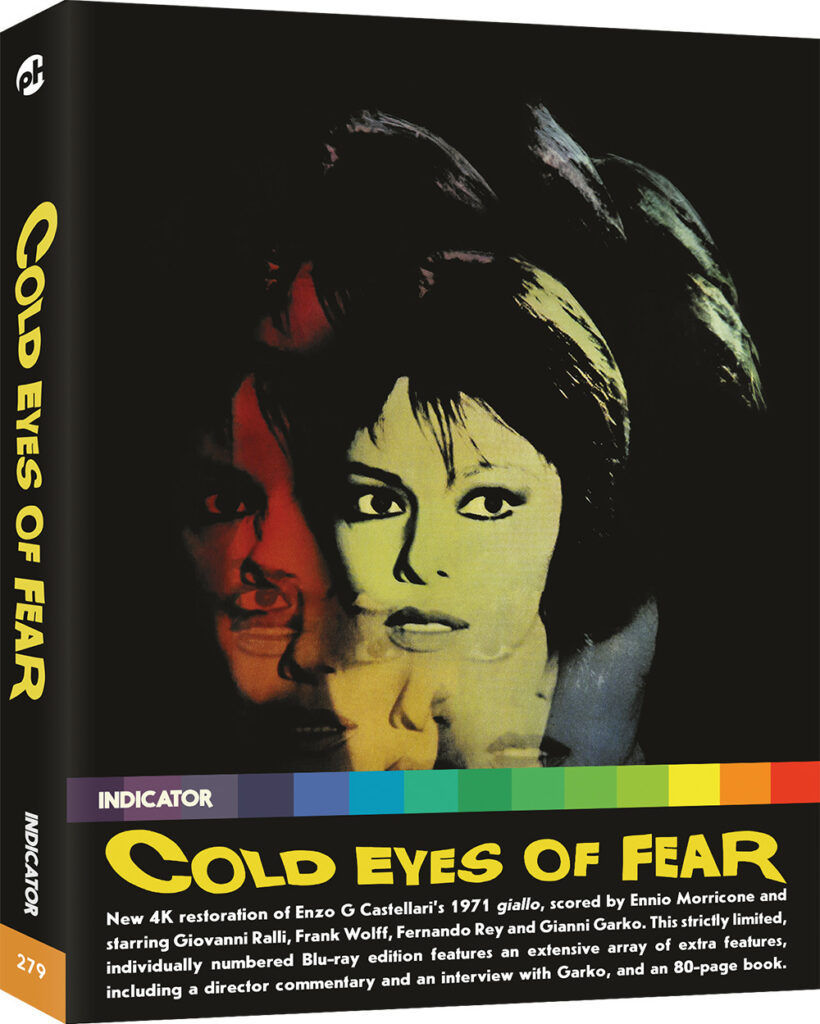
Cold Eyes of Fear (Indicator) Gorgeous 4K restoration (from the film negative) of Enzo G. Castellari’s crackling 1971 Italian thriller with a deliriously subversive opening showing a beautiful woman in a negligee being attacked by a switchblade-wielding psycho only to have it only be a stage act at a nightclub. Gianni Garko plays Peter, a handsome young lawyer who picks up a girl (Giavanna Ralli) at the club and brings her back to his Judge/Uncle’s house only to find the butler dead and a vicious hood (Julian Mateos) holding them both at gunpoint. Later a policeman (Frank Wolff) shows up to further pull the rug out from under the audience. Fernando Rey plays the Judge, still at work, little knowing his door is wired to explosives. Castellari really makes the most of the single-set premise and then there’s the nerve-jangling electronic score by Ennio Morricone. With terrific extras including with the director and also actor Gianni Garko and a thoughtful soundtrack dissection by Lovely John. Set in London, this comes with an English soundtrack but I urge you to first listen to it in Italian (with subtitles). It makes for a better experience. There’s also coverage (in a handsome booklet about the tragic suicide of actor Frank Wolff at age 41, who slit his throat in a hotel room 8 months after the release of Cold Eyes of Fear).
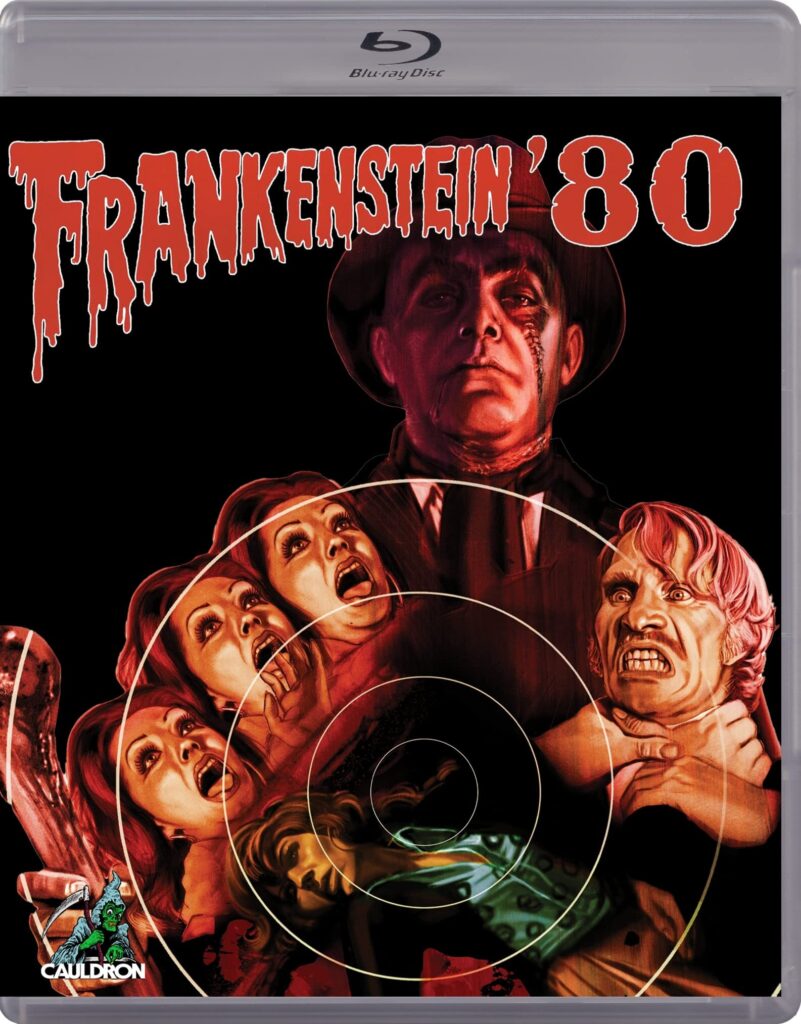
Frankenstein ’80 (Cauldron) God forgive me but I just love this heaping helping of Euro-sleaze. Mario Mancini’s (who was camera operator for Mario Bava) only film- starring Gordon Mitchell as the crazed Dr. Otto Frankenstein who steals a serum that helps transplant patients in order to bring to life his stitched together monster who he calls Mosaico (Xiro Papas). Unfortunately, the horny creature keeps getting out at night to kill prostitutes or beat butchers to death with large leg bones. The police (handsome John Richardson) are baffled and even the doctor’s beautiful daughter (Dalila Di Lazzaro) is put in danger. Filled to the brim with gratuitous nudity and gore this (uncensored and restored) 1972 movie is just a hoot. Be sure to listen to the fabulous audio interview with Dalila Di Lazzaro where she discusses the mayhem on the set of Andy Warhol’s Frankenstein (where she played the female creature).
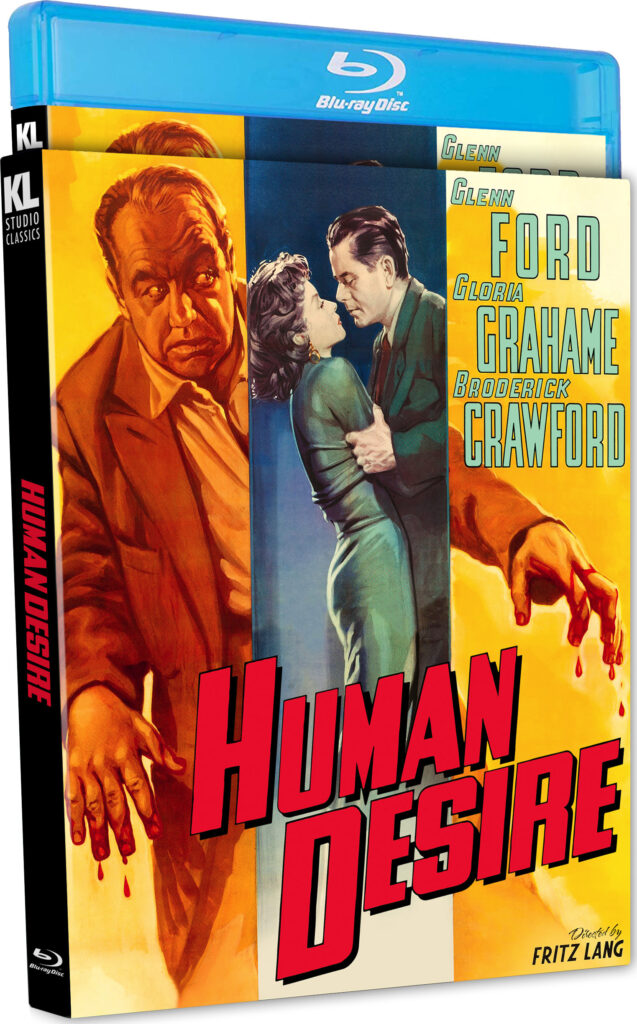
Human Desire (Kino Lorber) An unjustly neglected film noir classic by Fritz Lang reuniting Glenn Ford and Gloria Grahame from Lang’s The Big Heat. Ford plays Jeff Warren, a brooding train conductor back home after 3 years fighting in the Korean War. Grahame plays Vickie, the restless, sensual wife of a brutal, psychotically jealous railroad man Carl Buckley (Broderick Crawford). There’s a murder aboard a train and Ford becomes an unwitting witness, and finds himself lethally entwined with Vickie who tries to rope him into killing her husband. “When I first came here,” Vickie confesses to Jeff as he lights her cigarette, “I thought I’d never get used to the trains. Now when it’s quiet, I get nervous.” Based on an Emile Zola novel, Grahame and Ford are just sensational and the moody use of lighting and sound (particularly railroad noise) build to a suspenseful finale. There’s an excellent extra “Terror and Desire” with actress Emily Mortimer discussing and praising the film.
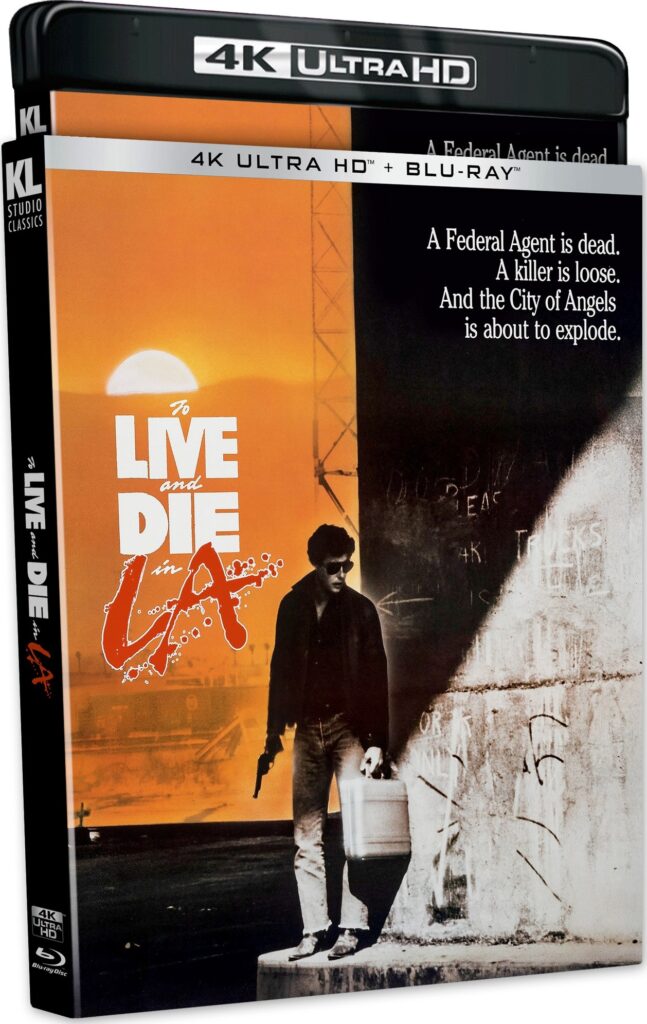
To Live and Die in L.A. (4K) (Kino Lorber) A neo-noir masterpiece by director William Friedkin. William Peterson plays Richard Chance, a reckless and shady secret service agent, who, with his honest partner (John Pankow), is hell bent on bringing down the notorious counterfeiter Rick Masters (an unforgettable Willem Dafoe). He also is sleeping with his female informant (Darlanne Fluegel) for information on Masters. Shot on location by sensational cinematographer Robby Mueller, there is definitely a dark undercurrent running throughout the movie. But you get so caught up in all the nightmare heists and breathtaking car chases it’s only at the end of the picture when it finally kicks you in the gut. This only gets better and better every time I see it, and now in a gorgeous 4K UHD disc. .
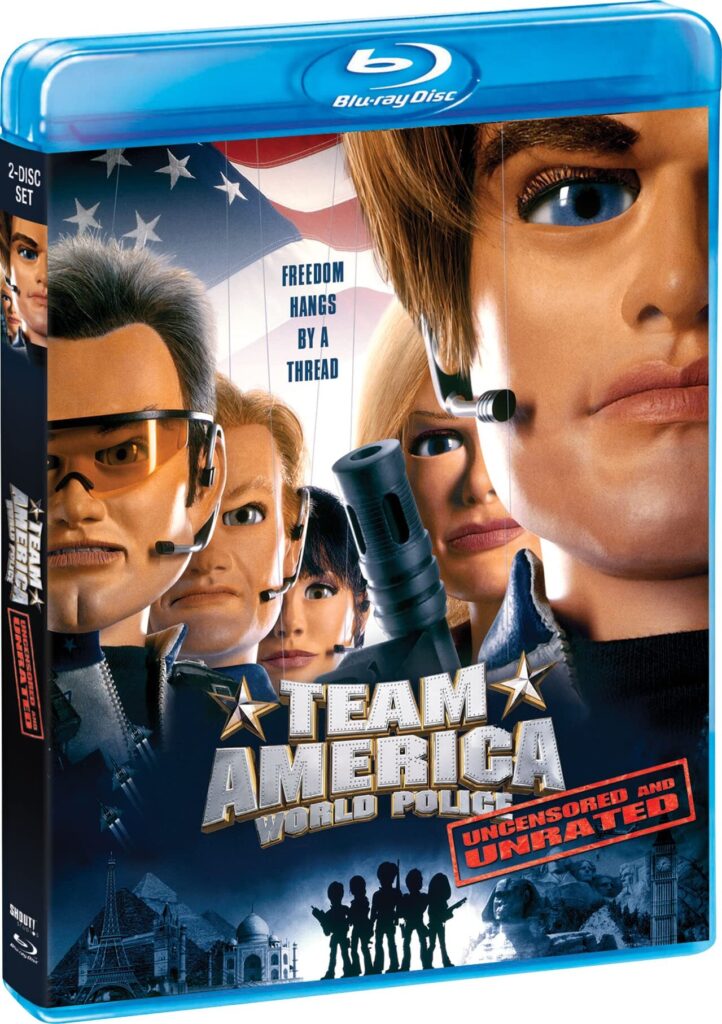
Team America: World Police (Shout! Factory) A rude and furiously funny adult puppet action film by the ingenious bad boys behind South Park– Matt Stone and Trey Parker. A Broadway actor is recruited by a counterterrorist police force to help bring down Kim Jong Il. There are riotous puppet sex sequences, puppet vomiting, hilarious action sequences and Michael Moore blows himself up in a suicide mission. What more could you want from a movie? An incredibly ambitious, deranged, undertaking, this uncensored version is the way you need to see it.
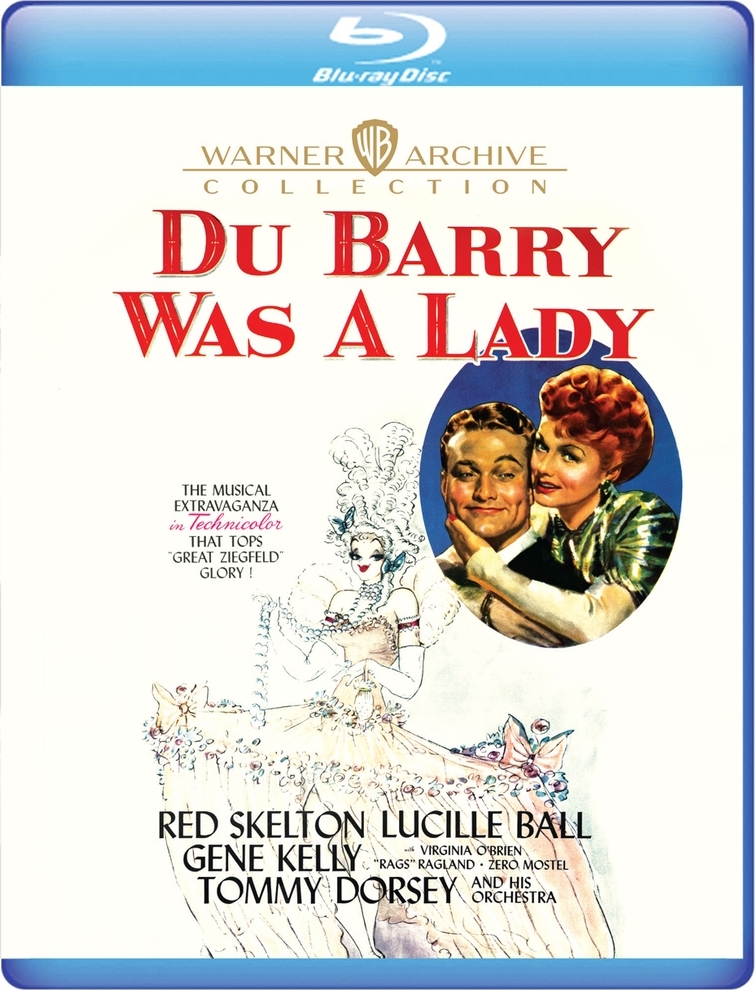
Du Barry Was a Lady (Warner Archive) Based on a Cole Porter Broadway musical that starred Bert Lahr, Ethel Merman and Betty Grable, this Technicolor film version stars a glamorous Lucille Ball, the always irritating Red Skelton, criminally handsome Gene Kelly (“a nice guy without a nickel”), Zero Mostel and the Tommy Dorsey Orchestra. Lucille Ball plays a nightclub singer holding out to marry a wealthy husband. Red Skelton plays a coatroom attendant madly in love with her who accidentally downs a drugged drink and dreams he is King Louis IV and Ball is Madame Du Barry. With the Cole Porter tunes Du Barry Was a Lady, Do I Love You? and Friendship (which Lucille Ball gleefully reprised on I Love Lucy with Vivian Vance). As much as Red Skelton makes my skin crawl, this is actually a lot of fun. And the Technicolor practically scorches your retinas.
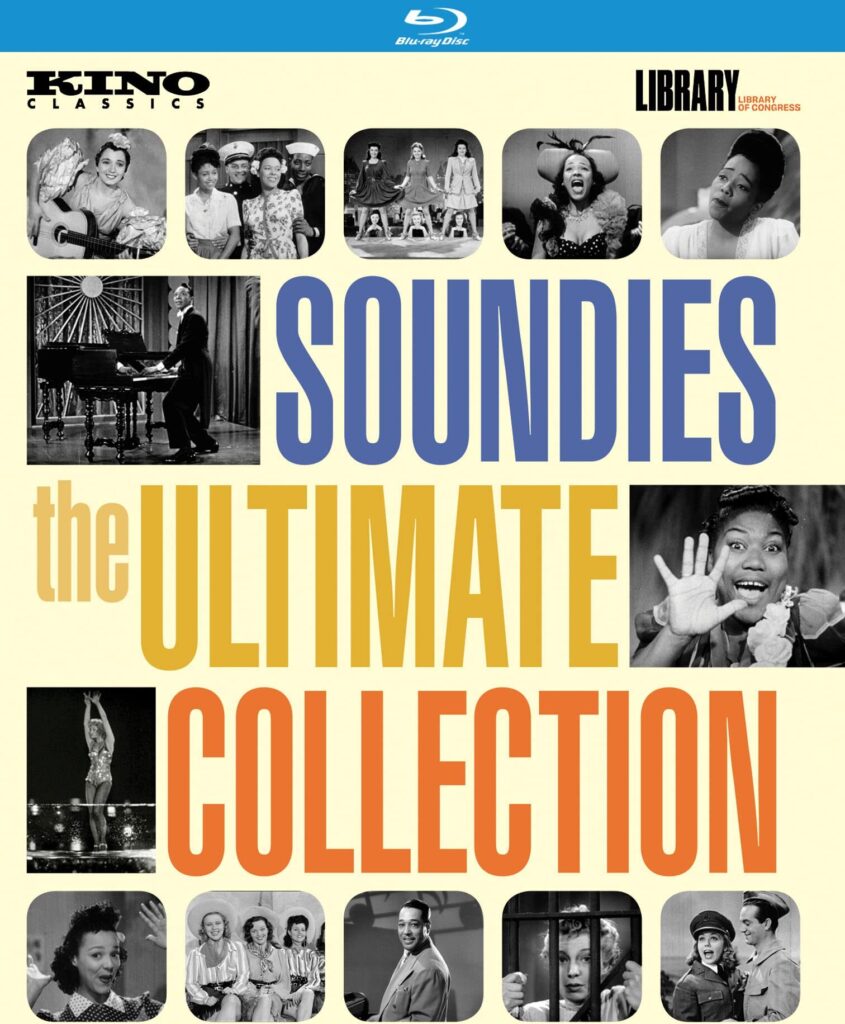
Soundies: Ultimate Collection (Kino Classics) “Soundies” were 3-minute musical films made in the 1940s which were able to be watched in “Panoram” machines (for a dime) in bars, restaurants and nightclubs. This amazing collection is from the Library of Congress and the source material varies- but some are dazzling from preserved 35mm prints. What joy to watch these rare films of some great orchestras as Duke Ellington, Count Basie, Cab Calloway and Stan Kenton, not to mention Thelma White and her All-Girl Orchestra. There are comic “hillbilly” “soundies” like “There’s a Hole in the Old Oaken Bucket” and Latin ones like “Rhumba New York.” There’s a great section dedicated to “Dance” rocking with tap dance and jitterbug. A young, electrifying Dorothy Dandridge sings “Swing for Your Supper,” “A Zoot Suit,” and “Cow-Cow Boogie.” Sister Rosetta Tharpe rips the roof off with “Four or Five Times” and “That Lonesome Road.” Because many of these Panoram machines were in taverns there are fabulous alcohol-promoting ones like “Clink, Clink, Another Drink” “Bottoms Up” and “Cocktails for Two.” There are plenty that reflect the War-time mindset like Toni Lane singing “When Hitler Kicks the Bucket.” Fats Waller throws a wild, rocking house party in “This Joint is Jumpin.’” There’s even a section of “Outrageously Incorrect- and Sometimes Subversive” with “soundies” that often subvert stereotypes with humor and weirdness. One of my favorites is Cindy Walker singing from a jail cell, “Seven Beers with the Wrong Kind of Man.” Excellent introductions by author Susan Delson and Ina Archer.
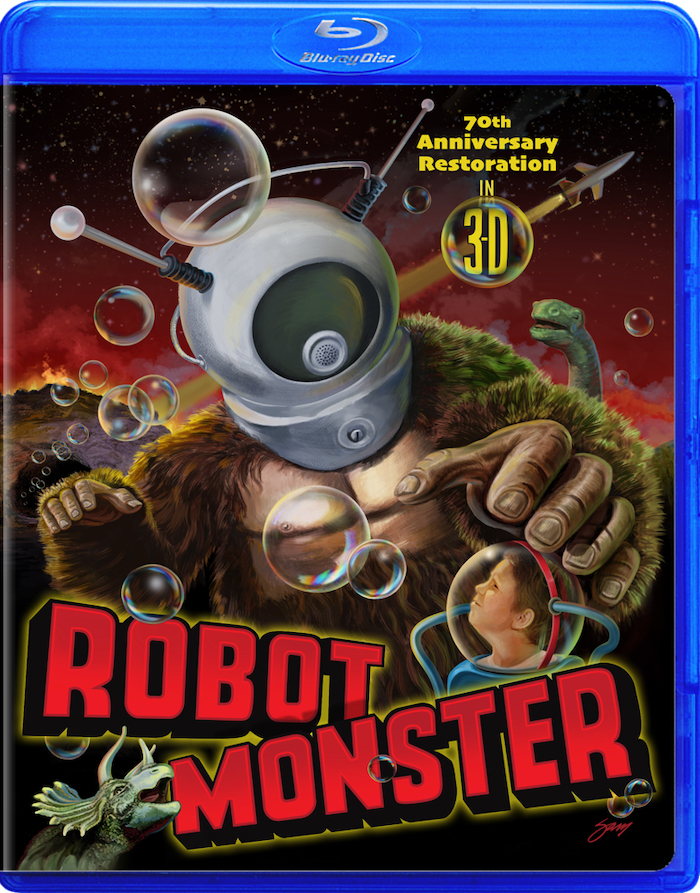
Robot Monster 3D (BayView Entertainment) A kickstarter campaign helped fund the restoration of this 1953 sci-fi howler about a handful of people left on earth after an apocalyptic alien invasion. Robot Monster (a guy in a gorilla suit with a diving helmet on his head) is holed up in a cave (shot in the Bronson Caves in L.A.’s Griffith Park) busy communicating with his superiors over an intergalactic television/short-wave radio set with a very active bubble machine behind him. Handsome George Nader (often shirtless) battles the creature, who also has a deadly run in with an annoying little girl. The real hilarity is in the long philosophical Hamlet-like monologues given by the Robot Monster. “To be like the hu-man! To laugh! Feel! Want! Why are these things not in the plan? I cannot, yet I must. How do you calculate that? At what point on the graph do ‘must’ and ’cannot’ meet? Yet I must- but I cannot!” Director Phil Tucker was unfairly trashed by Harry and Michael Medved in The Golden Turkey Awards book, but this is so much more fun than any new movie out there, and seeing it once again in 3-D is sublime. And there is over two hours of bonus materials!


